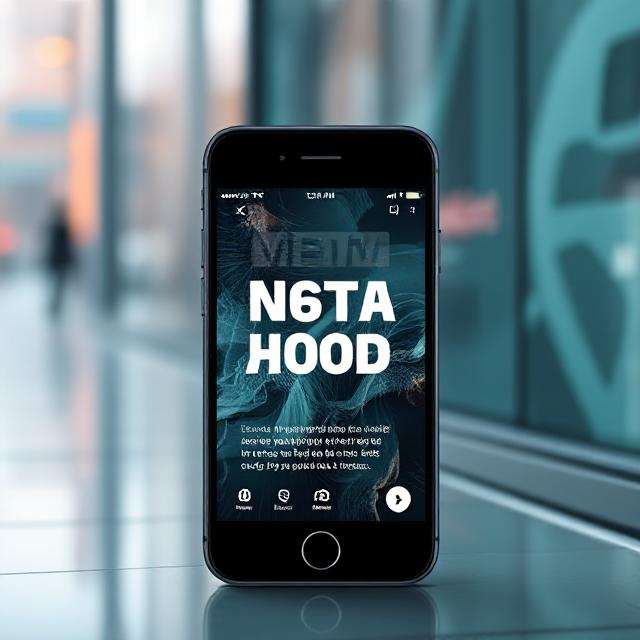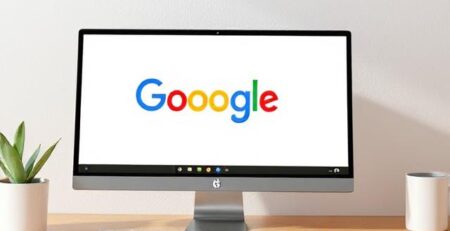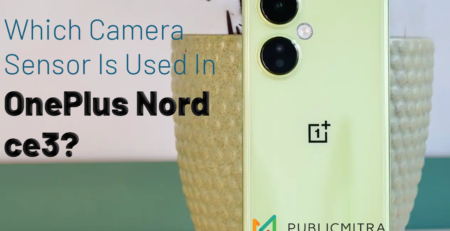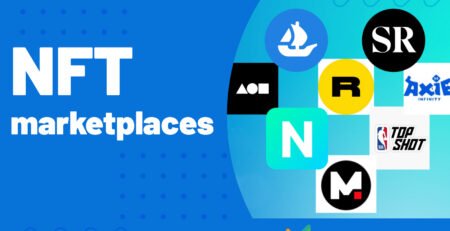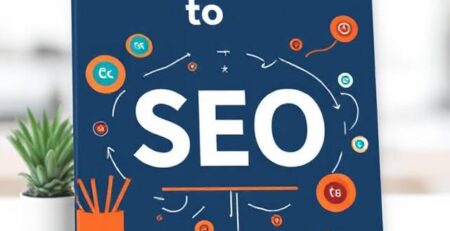Meta Ads Explained: Complete Guide to Facebook Advertising in 2025
1) What is a Meta Ad?
Meta Ads are paid advertisements run across Meta’s family of platforms — Facebook, Instagram, Messenger, and Audience Network.
They allow businesses to reach specific audiences based on demographics, interests, behaviors, and intent signals collected from user activity on Meta platforms.
When you sponsor a post or create an ad campaign through Meta Ads Manager, your content is displayed in feeds, stories, reels, or right-hand columns to targeted users.
How Meta Ads Work
- You choose an objective – awareness, engagement, or conversion.
- Set your audience – define who should see your ad (age, location, interest, etc.).
- Pick placement – Facebook feed, Instagram reels, Messenger, or automatic.
- Set your budget – daily or lifetime budget options.
- Upload creatives – image, video, carousel, or collection ads.
- Run and monitor – Meta delivers ads and optimizes based on results.
Example:
A fitness startup can target women aged 22–35 in Mumbai who follow yoga pages with a video ad promoting “30-Day Weight Loss Challenge.”
2) What is the difference between Meta Ads and Google Ads?
Both Meta Ads and Google Ads dominate the digital advertising world but operate differently:
| Feature | Meta Ads | Google Ads |
|---|---|---|
| Platform | Facebook, Instagram, Messenger | Google Search, YouTube, Display Network |
| Intent | Demand Generation – creates interest | Demand Fulfillment – captures intent |
| Targeting | Based on user demographics, interests & behavior | Based on keywords and search queries |
| Ad Type | Visual (images, videos, stories) | Text, shopping, video |
| Objective | Brand awareness & engagement | Direct sales or lead capture |
| Audience | Active users scrolling social feeds | People searching for information |
In simple terms:
- Meta Ads = Push marketing (you show ads to people likely to be interested).
- Google Ads = Pull marketing (you show ads to people actively searching).
When to use which:
- Use Meta Ads for brand awareness, storytelling, or lifestyle products.
- Use Google Ads for capturing existing intent — e.g., “Buy running shoes online.”
3) What are the three levels of Meta Ads?
Meta Ads are structured into three hierarchical levels inside Meta Ads Manager:
1. Campaign Level
Defines the objective (Awareness, Traffic, Leads, Sales).
- Example: “Increase website sign-ups.”
2. Ad Set Level
Controls targeting, budget, schedule, and placement.
- Example: Target women aged 25–40 in Bengaluru who follow fitness pages.
3. Ad Level
Defines creative elements — visuals, copy, CTAs, and links.
- Example: Video ad with headline “Lose Weight in 30 Days.”
| Level | Purpose | Example |
|---|---|---|
| Campaign | Define goal | Lead Generation |
| Ad Set | Set audience & placement | Target IT professionals in Chennai |
| Ad | Create visuals & copy | Carousel ad showcasing your services |
This structure makes Meta Ads modular and testable, so marketers can A/B test creatives or audiences while keeping goals consistent.
4) What are the 6 objectives of Meta Ads?
Meta Ads revolve around 6 key advertising objectives categorized under Awareness, Consideration, and Conversion.
1. Awareness
- Brand Awareness – reach people likely to remember your ad.
- Reach – maximize the number of people who see your ad.
2. Consideration
- Traffic – drive visitors to a website or app.
- Engagement – get likes, shares, and comments.
- App Installs – promote app downloads.
- Video Views – promote videos to increase watch time.
- Lead Generation – collect leads directly within Facebook forms.
- Messages – get people to message you on WhatsApp, Messenger, or Instagram.
3. Conversion
- Conversions – encourage valuable actions like sign-ups or purchases.
- Catalog Sales – automatically promote products from your catalog.
- Store Traffic – drive in-store visits.
Simplified Funnel View:
- Top of Funnel (TOFU) – Awareness
- Middle of Funnel (MOFU) – Engagement/Consideration
- Bottom of Funnel (BOFU) – Conversions
5) What are the benefits of Meta Ads?
Meta Ads remain one of the most powerful marketing tools for brands because they combine reach, targeting precision, and performance tracking.
Top Benefits:
- Massive Audience Reach
- Over 3.9 billion active users across Facebook, Instagram, and Messenger.
- Advanced Targeting
- Location, age, gender, interests, behavior, and custom audiences (website visitors or email lists).
- Cost-Effective
- You can start with as little as ₹100/day and scale up based on performance.
- Diverse Ad Formats
- Image, video, carousel, reels, instant experiences, and stories.
- Retargeting
- Reach people who interacted with your brand before — extremely powerful for eCommerce.
- Measurable ROI
- Track clicks, leads, purchases, and even offline events in Ads Manager Dashboard.
- Cross-Platform Visibility
- One ad setup can run on both Facebook and Instagram automatically.
- AI-Powered Delivery
- Meta’s AI optimizes ad delivery to people most likely to convert.
6) How long does an ad review take?
Every Meta Ad goes through a review process to ensure it meets community and advertising standards.
Typical Review Timeline:
- Usually within 24 hours, but can take up to 48 hours during high-volume periods.
Process Steps:
- Automated Review – AI checks text, image, and landing page content.
- Manual Review (if flagged) – A human reviewer checks for compliance.
- Approval or Rejection Notification – You’ll receive an update in Ads Manager.
Pro Tip:
Avoid using misleading claims (“Best in the world”) or restricted categories (alcohol, political content) — they trigger manual review delays.
7) What is the success rate of Meta Ads?
The success rate depends on industry, targeting precision, creative quality, and optimization.
Average Benchmarks (2025):
- CTR (Click-Through Rate): 1.5% – 2.5%
- CPC (Cost Per Click): ₹5 – ₹20 (depending on audience size)
- Conversion Rate: 9% – 12% for optimized campaigns
- ROAS (Return on Ad Spend): 3x – 8x (for eCommerce brands)
Key to Success:
- Continuous A/B testing
- Creative refresh every 10–14 days
- Retargeting warm audiences
- Using Meta Pixel for conversion tracking
8) What is a boosted post?
A boosted post is the simplest form of Meta advertising — when you pay to promote an existing post from your Facebook or Instagram page.
Boosted Post vs Ad Campaign
| Feature | Boosted Post | Meta Ad Campaign |
|---|---|---|
| Created From | Page directly | Ads Manager |
| Objectives | Engagement, reach, messages | Awareness, leads, conversions |
| Customization | Limited | Advanced targeting |
| Control | Basic | Full control (A/B testing, placement, budget) |
Boosted posts are ideal for beginners or when you want to increase social engagement quickly, while full campaigns are better for conversion-focused results.
9) What is the minimum budget amount for Meta Ads?
Meta allows flexible budgeting, making it accessible for all businesses.
Minimum Budget Requirements:
- Per Day Budget: ₹100 – ₹150 (for awareness campaigns).
- Conversion Campaigns: Recommended at least ₹500/day for meaningful data.
- Lifetime Budget: ₹700 – ₹1,000 minimum.
Pro Tip:
Start small, collect performance insights for 3–5 days, and then scale gradually. Meta’s algorithm needs 50 conversions/week for stable optimization.
10) What is a good click rate on Meta Ads?
Click-Through Rate (CTR) measures how many people clicked your ad out of all who saw it.
Average CTR Benchmarks (2025):
| Industry | Average CTR |
|---|---|
| eCommerce | 2.1% |
| Education | 1.7% |
| Real Estate | 1.3% |
| Health & Fitness | 1.9% |
| SaaS / B2B | 0.9% |
A good CTR for most industries is 1.5%–2.5%.
Tips to Improve CTR:
- Use emotional headlines (e.g., “Limited Time Offer!”).
- Include contrasting colors in visuals.
- Add clear CTAs (Shop Now, Learn More).
- Use dynamic creatives to tailor messaging automatically.
11) What are the image sizes for Meta Ads?
Using correct image and video dimensions ensures your ads display perfectly across platforms.
| Ad Type | Recommended Size | Ratio | Format |
|---|---|---|---|
| Feed Image | 1080 x 1080 px | 1:1 | JPG / PNG |
| Feed Video | 1080 x 1080 px | 1:1 | MP4 / MOV |
| Story / Reels | 1080 x 1920 px | 9:16 | MP4 |
| Carousel | 1080 x 1080 px | 1:1 | JPG / PNG |
| Collection | 1200 x 628 px | 1.91:1 | JPG |
| Cover Photo | 820 x 312 px | — | JPG |
File Size Limit: 30MB for images, 4GB for videos.
Pro Tip: Add less than 20% text on images — Meta penalizes heavy text visuals.
12) What are the metrics for Meta Ads campaign?
Meta provides a detailed dashboard for analyzing ad performance.
Key Performance Metrics:
| Metric | Meaning | Why It Matters |
|---|---|---|
| Impressions | Number of times ad shown | Measures exposure |
| Reach | Unique users who saw the ad | Checks audience size |
| CTR (Click-Through Rate) | % of people who clicked | Measures engagement |
| CPC (Cost Per Click) | Average cost per click | Tracks cost efficiency |
| CPM (Cost Per 1,000 Impressions) | Ad cost per thousand views | Shows visibility cost |
| Conversions | Users who completed desired action | Indicates success |
| ROAS (Return on Ad Spend) | Revenue ÷ Ad spend | Determines profitability |
| Frequency | Average times same person saw the ad | Prevents ad fatigue |
Advanced Metrics:
- Attribution Window – Time between ad view and conversion.
- Pixel Events – Page View, Add to Cart, Purchase tracking.
- Ad Relevance Diagnostics – Quality ranking, engagement rate ranking, conversion ranking.
13) How to optimize Meta Ads?
Optimization is the most crucial phase — where raw data turns into better performance.
Step-by-Step Meta Ads Optimization Strategy
1. Define Clear Objectives
Choose measurable goals — traffic, leads, or conversions — before launching.
2. Audience Refinement
- Use Custom Audiences (past visitors, email lists).
- Use Lookalike Audiences (Meta’s AI finds similar people).
- Exclude irrelevant audiences to reduce waste.
3. Improve Ad Creatives
- Use short-form videos (6–15 sec) for better engagement.
- Rotate creatives every 2 weeks to avoid ad fatigue.
- Highlight benefits, not features.
4. Split Test (A/B Testing)
Test one variable at a time — copy, image, audience, or placement.
5. Optimize Budget Allocation
- Start broad with Campaign Budget Optimization (CBO).
- Let Meta’s AI shift spend to best-performing ad sets.
6. Track Conversions with Pixel
Install Meta Pixel or Conversions API (CAPI) to measure sales, leads, or downloads accurately.
7. Leverage Retargeting
Re-engage visitors who:
- Added to cart but didn’t purchase.
- Watched 50%+ of your video.
- Visited pricing pages.
8. Analyze & Iterate
Use the Meta Ads Dashboard weekly to review metrics:
- Pause low-performing ads.
- Duplicate high performers and scale budgets.
- Check frequency — if above 4, refresh creatives.
9. Combine with Organic
Blend paid and organic strategies. Ads perform better when supported by organic content credibility on pages.
Bonus: Pro Tips for 2025 Meta Ads Success
- Use AI-Powered Tools
- Leverage Meta Advantage+ for automated creative optimization.
- Use ChatGPT or Jasper AI for ad copywriting.
- Focus on Video Ads
- 65% higher conversion rate than static images.
- Mobile-First Design
- 95% of Meta users are on smartphones — vertical video formats win.
- First 3 Seconds Rule
- Hook viewers instantly with emotion or surprise.
- Leverage Reels Ads
- Reels are growing faster than feed content — ideal for Gen Z reach.
Conclusion: Meta Ads in 2025 – Data, AI & Creative Harmony
Meta Ads have evolved from simple boosted posts into a data-driven ecosystem powered by AI, automation, and storytelling.
Whether you’re a startup or an enterprise, Meta’s advertising suite offers:
- Global reach with hyperlocal targeting
- Smart budget optimization using AI
- Comprehensive analytics for decision-making
In 2025, success in Meta Ads will depend on creative personalization + algorithmic intelligence.
As competition increases, brands that combine empathy, storytelling, and analytics will dominate user attention — and ad conversions.


